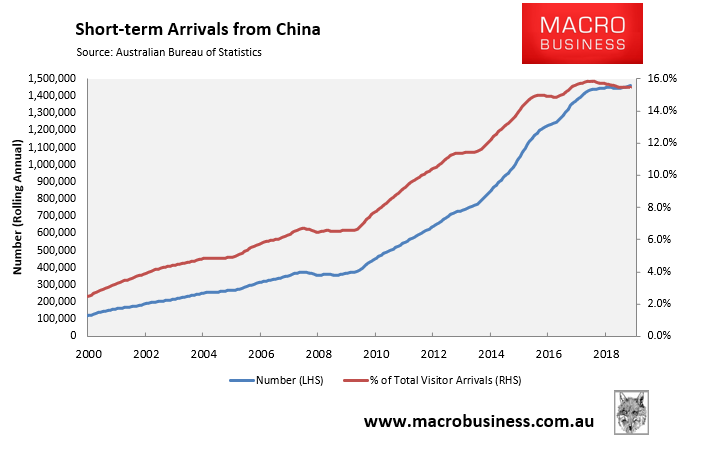The Australian Bureau of Statistics yesterday published its overseas short-term arrivals figures for October, with Chinese visitors hitting fresh all-time highs.
The number of short-term visitor arrivals rose by 2.7% in the year to October, whereas short-term resident departures rose by 2.9%. The ratio of annual arrivals to departures remained at 81.4%:
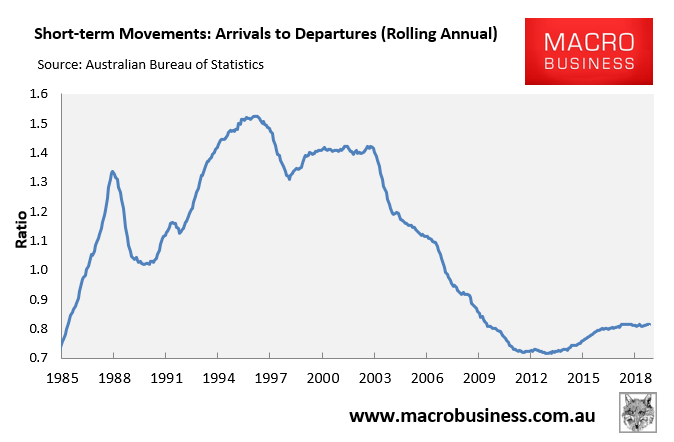
Net short-term arrivals also remained heavily in deficit:
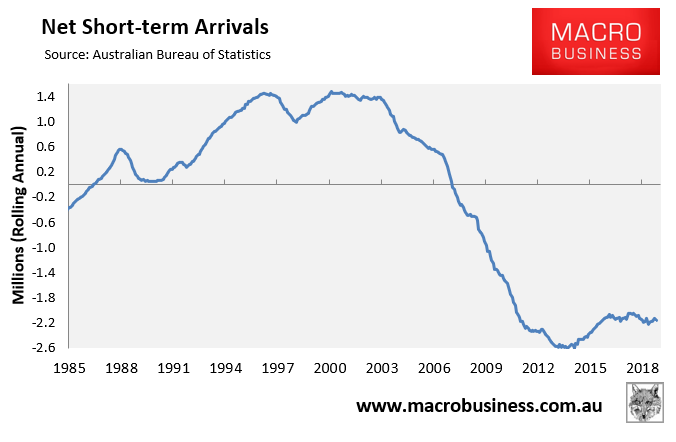
In the year to October 2019, 9.4 million inbound visitors arrived in Australia over the year – a 71% increase on a decade ago (5.5 million). The number of Australians traveling overseas was 11.6 million – an 83% increase on 10 years ago (6.3 million):
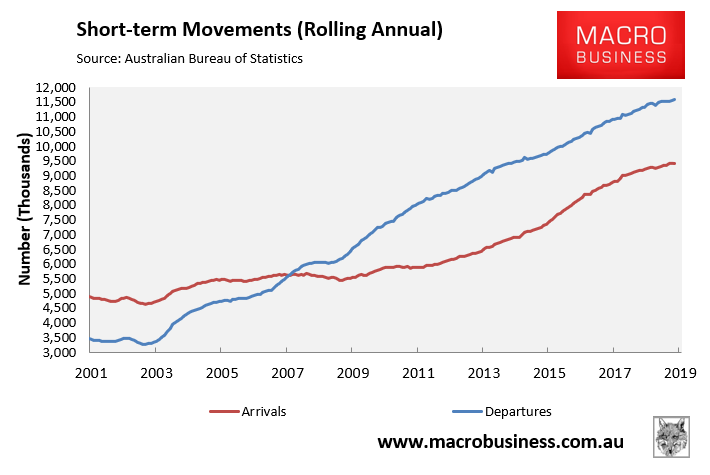
The next chart shows that short-term arrivals were dominated by holiday makers and those visiting friends and families:
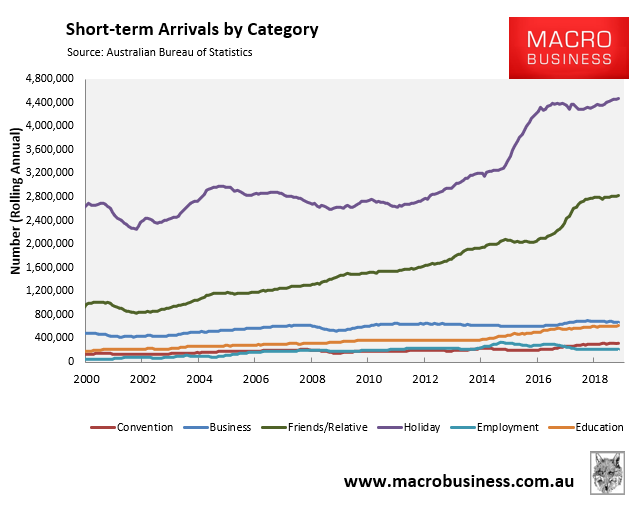
As shown below, most foreign visitors to Australia came from NE Asia, which accounted for 29% of arrivals:
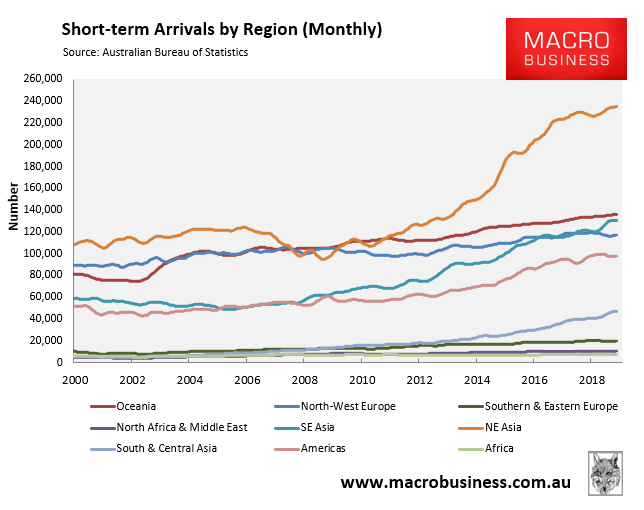
In particular, arrivals from China hit a record high 126,100 in October:
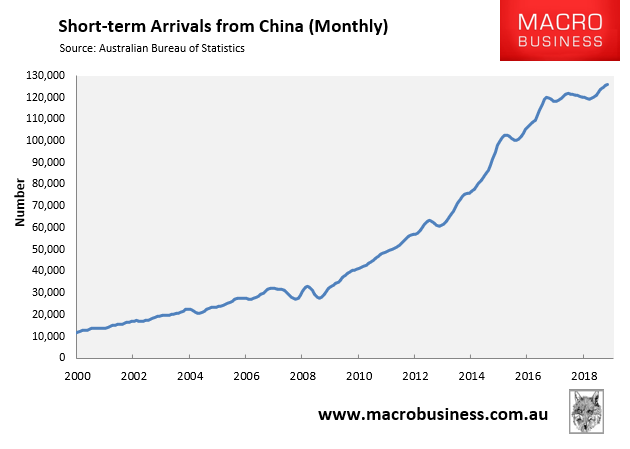
Chinese arrivals also hit an all-time high 1.46 million in the year to October, accounting for 15.5% of total arrivals in Australia:
